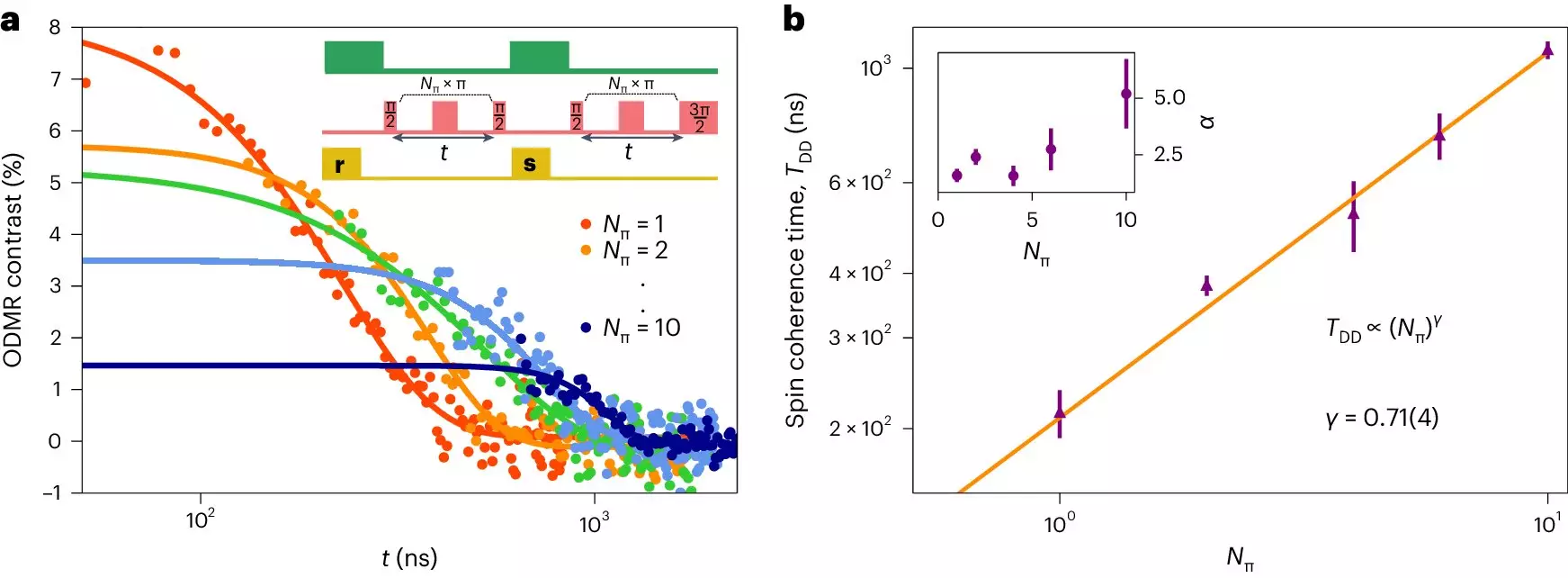Recent research conducted by scientists from the Universities of Manchester and Cambridge has unveiled a groundbreaking discovery in the field of quantum information storage. By studying a “single atomic defect” in a layered 2D material known as hexagonal boron nitride (hBN), researchers have demonstrated the ability to retain quantum information for microseconds at room temperature. This key finding underscores the vast potential of 2D materials in advancing quantum technologies by showcasing spin coherence, a property where an electronic spin can preserve quantum information even under ambient conditions.
The study published in Nature Materials has shed light on the remarkable capabilities of hBN in storing and controlling spins with light, a feat that has only been achieved by a few solid-state materials to date. The results of the research have surpassed initial expectations, revealing that spin coherence at room temperature can be maintained for an unexpectedly long duration. Co-author of the paper, Carmem M. Gilardoni, emphasized the promising nature of the system for future quantum applications, noting that the information stored on the spin of electrons can persist for approximately 1 millionth of a second.
Hexagonal boron nitride is composed of ultra-thin layers stacked together, akin to sheets of paper. These layers contain atomic defects, which act as local traps for electrons and allow for the absorption and emission of visible light. The presence of these defects in hBN enables scientists to study the behavior of trapped electrons, specifically focusing on their spin property that enables interactions with magnetic fields. Furthermore, the ability to manipulate electron spins using light within these defects at room temperature represents a groundbreaking achievement in the field of quantum technologies.
Dr. Hannah Stern, the first author of the paper, highlighted the significance of fundamental research in new materials, particularly in harnessing excited state dynamics for future quantum applications. She emphasized the importance of exploring different material systems to expand the toolkit of available materials and advance the scalable implementation of quantum technologies. This innovative approach holds the key to unlocking new possibilities in the realm of quantum information storage and manipulation.
While there is still much to investigate before the technology reaches maturity for practical applications, the current findings have opened up a plethora of opportunities in sensing technology and beyond. Researchers are actively working on enhancing the quality and reliability of atomic defects in hBN, with a focus on extending the spin storage time and optimizing system parameters crucial for quantum-technological applications. The ongoing efforts in this area are essential for supporting the development of quantum technologies and realizing the full potential of 2D materials in advancing the field.
The discovery of spin coherence in a single atomic defect within a 2D material represents a significant milestone in the realm of quantum technologies. By harnessing the unique properties of hexagonal boron nitride, scientists have laid the foundation for future advancements in quantum information storage and manipulation. The journey towards harnessing the full potential of 2D materials for quantum applications is ongoing, and further research and development are necessary to unlock the transformative capabilities of this innovative technology.


Leave a Reply